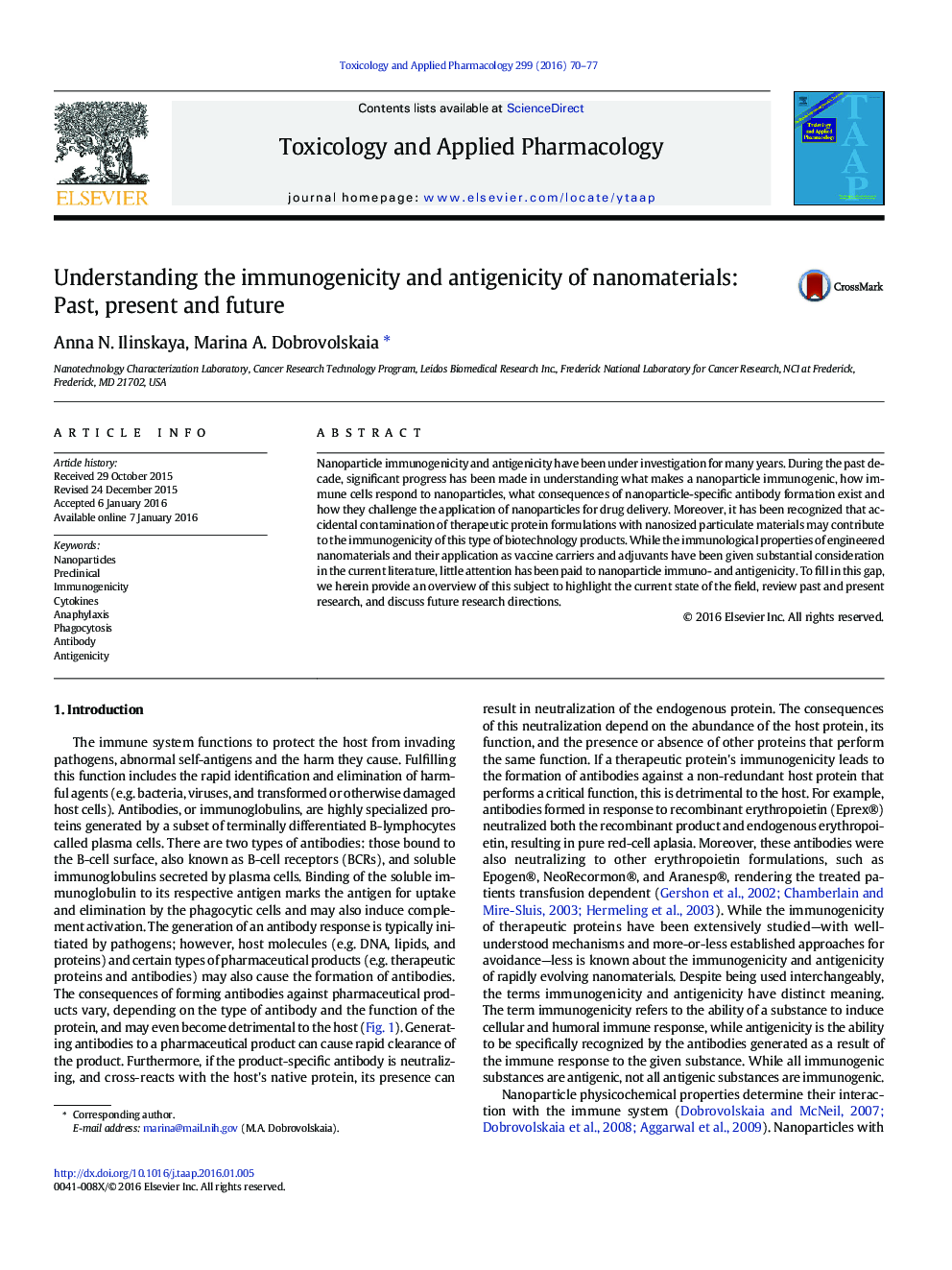| کد مقاله | کد نشریه | سال انتشار | مقاله انگلیسی | نسخه تمام متن |
|---|---|---|---|---|
| 2568120 | 1561163 | 2016 | 8 صفحه PDF | دانلود رایگان |
• Most engineered nanomaterials are not immunogenic per se.
• Generation of nanoparticle-specific antibody can be T-cell dependent or independent.
• Antibodies can be generated to particle core, terminal groups or surface coatings.
• Engineered and accidental nanomaterials have distinct contribution to immunogenicity.
• Tunable physicochemical properties make each nanoparticle unique.
Nanoparticle immunogenicity and antigenicity have been under investigation for many years. During the past decade, significant progress has been made in understanding what makes a nanoparticle immunogenic, how immune cells respond to nanoparticles, what consequences of nanoparticle-specific antibody formation exist and how they challenge the application of nanoparticles for drug delivery. Moreover, it has been recognized that accidental contamination of therapeutic protein formulations with nanosized particulate materials may contribute to the immunogenicity of this type of biotechnology products. While the immunological properties of engineered nanomaterials and their application as vaccine carriers and adjuvants have been given substantial consideration in the current literature, little attention has been paid to nanoparticle immuno- and antigenicity. To fill in this gap, we herein provide an overview of this subject to highlight the current state of the field, review past and present research, and discuss future research directions.
Figure optionsDownload high-quality image (214 K)Download as PowerPoint slide
Journal: Toxicology and Applied Pharmacology - Volume 299, 15 May 2016, Pages 70–77
